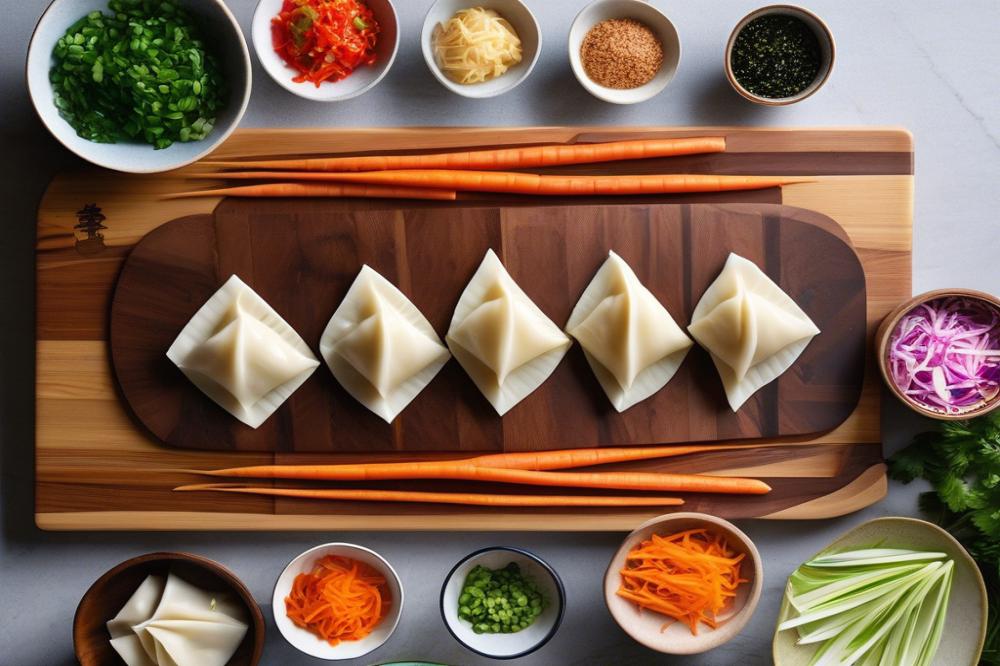Introduction
Overview of recipebix.com/how-to-cook-sundubu-jjigae-with-seafood”>Korean Mandu
recipebix.com/how-to-cook-sundubu-jjigae-with-seafood”>Korean Mandu offers a delightful glimpse into a rich culinary tradition. These dumplings can be filled with various ingredients, ranging from seasoned meats to fresh vegetables. The choice of the filling is often personal and can vary widely from one household to another. Wrapper preparation typically involves a simple dough made from flour and water, which envelops the chosen filling. Cooking methods can include steaming, frying, or boiling, each bringing out different flavors and textures.
Importance in Korean Cuisine
In Korea, Mandu holds a special place in modern dining and festive occasions. Families often come together to create these dumplings, especially during holidays like Lunar New Year. Crafting them serves as a bonding experience and a means of passing down family recipes through generations. Every bite of Mandu is rich not only in flavor but also in history, making it a cherished dish among Koreans.
Cultural Significance and Variations
Cultural relevance expands beyond mere taste. Various regions in Korea boast their unique styles of Mandu, adding to its charm. Some variations feature different ingredients that reflect local produce and preferences. While the traditional approach highlights a careful mix of flavors, modern takes may introduce inventive twists on the classic recipe. These adaptations highlight the versatility of the dish and its ability to evolve while retaining its core identity. Each variation tells a story, making every dish a personal and cultural representation of Korean life.
Korean Mandu: The traditional Recipe
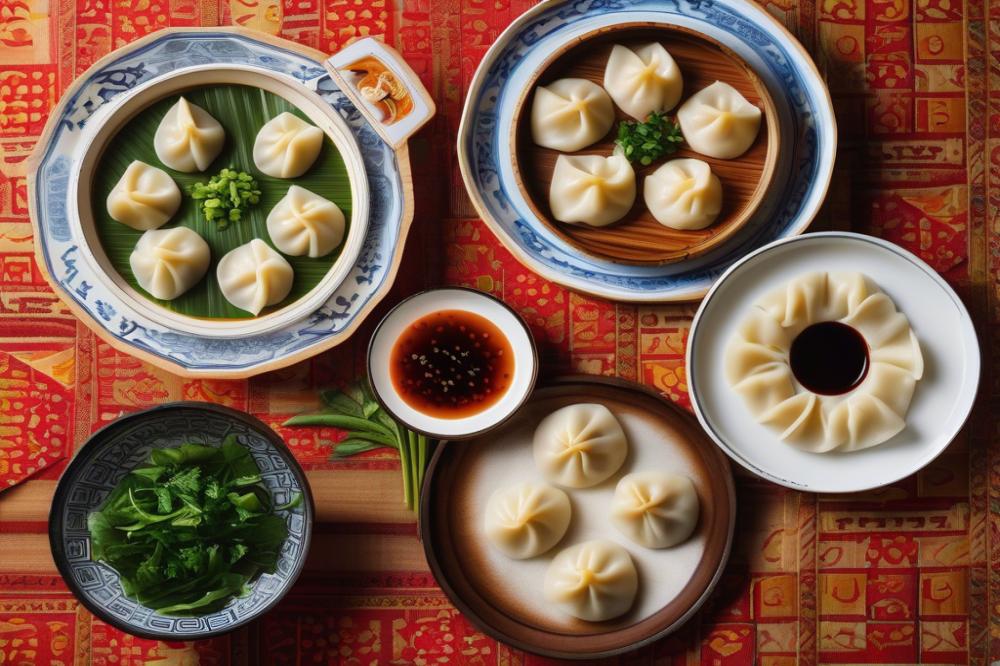
Making traditional dumplings at home is a rewarding experience. To create the perfect fill for each wrapper, gather the following ingredients:
- Mandu wrappers: 30 sheets
- Ground pork: 300g
- Tofu: 200g, pressed and crumbled
- Carrot: 1 medium, finely chopped
- Cabbage: 200g, finely chopped
- Garlic: 3 cloves, minced
- Ginger: 1 tsp, minced
- Soy sauce: 2 tbsp
- Sesame oil: 1 tbsp
- Green onions: 2 stalks, chopped
- Salt and pepper to taste
Each ingredient contributes to the overall flavor. Ground pork adds richness, while tofu provides a light texture. Carrots give a slight sweetness. Cabbage introduces crunch and moisture. Garlic and ginger bring warmth to the filling. Soy sauce contributes umami depth, and sesame oil adds a nutty aroma. Fresh green onions enhance the dish with brightness. Seasoning with salt and pepper will balance the flavors nicely.
Nutritional Information for Ingredients
Understanding the nutritional value is important. For the ground pork, there are approximately 250 calories per 100g. Tofu, being a good protein source, holds around 70 calories per 100g. Carrots contain about 41 calories, while cabbage has just 25 calories per 100g. Garlic offers minimal calories but provides powerful antioxidants. The oils and sauces used have healthy fats but should be used carefully to control total calorie intake.
Health Benefits of the Ingredients
This recipe features ingredients that offer various health benefits. Pork is a great source of protein and essential vitamins. Tofu is rich in calcium and can lower cholesterol. Carrots are loaded with beta-carotene, which is good for the eyes. Cabbage is known for its fiber, aiding digestion. Garlic may help boost the immune system. Ginger has anti-inflammatory properties. All these components combine to not only create a delicious filling but also a nutritious meal.
Cooking techniques add to the enjoyment of Mandu. You can choose to steam or fry them, depending on your preference. Steaming gives a soft, delicate texture, while frying offers a crispy exterior. Many serve them with a dipping sauce, enhancing the experience. Feel free to explore variations in fillings. Switching out proteins or adding different vegetables can make each batch unique.
Cooking Instructions for Mandu
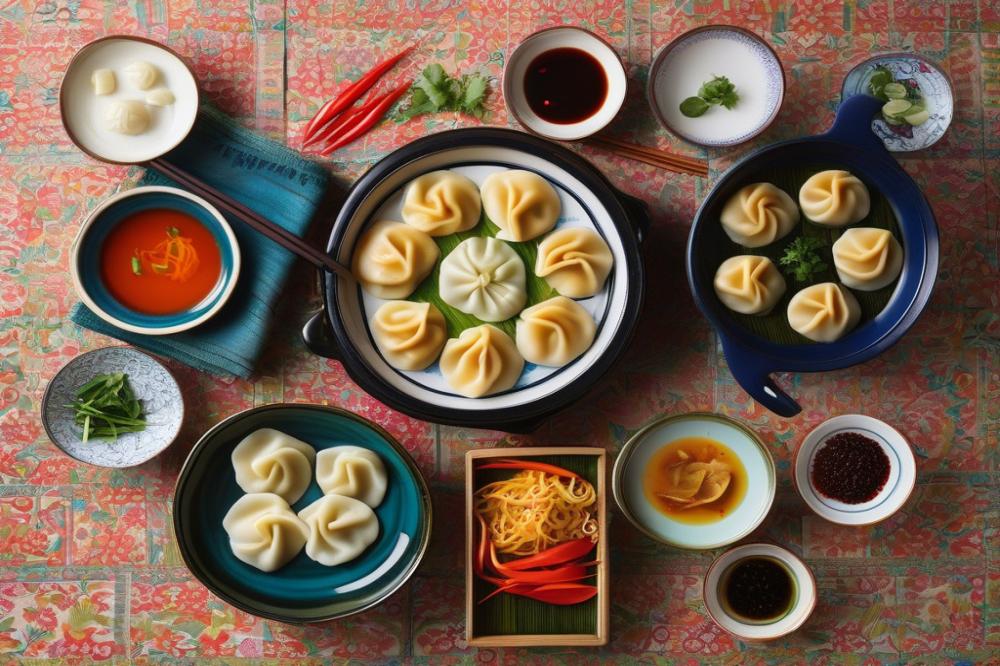
Step-by-step guide to preparing the filling
Start by gathering your ingredients. Common items include ground pork or beef, chopped vegetables, and tofu. A mix of garlic, ginger, and green onions adds flavor. Some people like to use mushrooms for an earthy taste. Try using napa cabbage, carrots, and scallions for freshness. Don’t forget to include soy sauce and sesame oil for seasoning.
Mix the various ingredients in a large bowl. Use your hands or a spoon to combine everything well. The mixture should be moist but not too wet. This texture is crucial for a good filling. Season to your liking. Taste as you go; feel free to adjust the soy sauce or add a little pepper for heat.
Instructions for wrapping the dumplings
Wrapping the dumplings may take some practice, but it becomes easy over time. Start with a prepared wrapper. Lay it flat on your palm, then add a spoonful of the filling in the center. Don’t overfill, as this will make sealing tricky.
To shape them, fold the wrapper in half. Pinch the edges together to create a half-moon shape. You can also create pleats along the edges for a traditional look. This gives them character and helps them stay closed.
For sealing, you can use water to moisten the edges of the wrapper. This helps the two sides stick together. Press firmly to ensure they are sealed well. Avoid leaving any openings, as the filling may leak during cooking.
Cooking options for Mandu
Steaming is a popular method for cooking mandu. Place them in a steamer lined with cabbage or parchment paper. This prevents sticking and allows for even cooking. Steam for about 10-12 minutes. They turn soft and flavorful.
If you prefer a crispy texture, frying is your best bet. Heat oil in a pan over medium heat. Carefully add the dumplings and cook until they are golden brown. Flip them over to cook the other side. This method gives a delightful crunch.
Boiling is another excellent choice. Bring a large pot of water to a boil. Gently drop the mandu into the pot. Cook them for around 5-7 minutes. They float when they are ready, making this method simple and straightforward.
You can serve the mandu with various dipping sauces. Soy sauce mixed with vinegar works well. Consider adding some chili flakes for extra spice. There are numerous variations, so explore according to your taste!
Tips for Perfecting Your Mandu
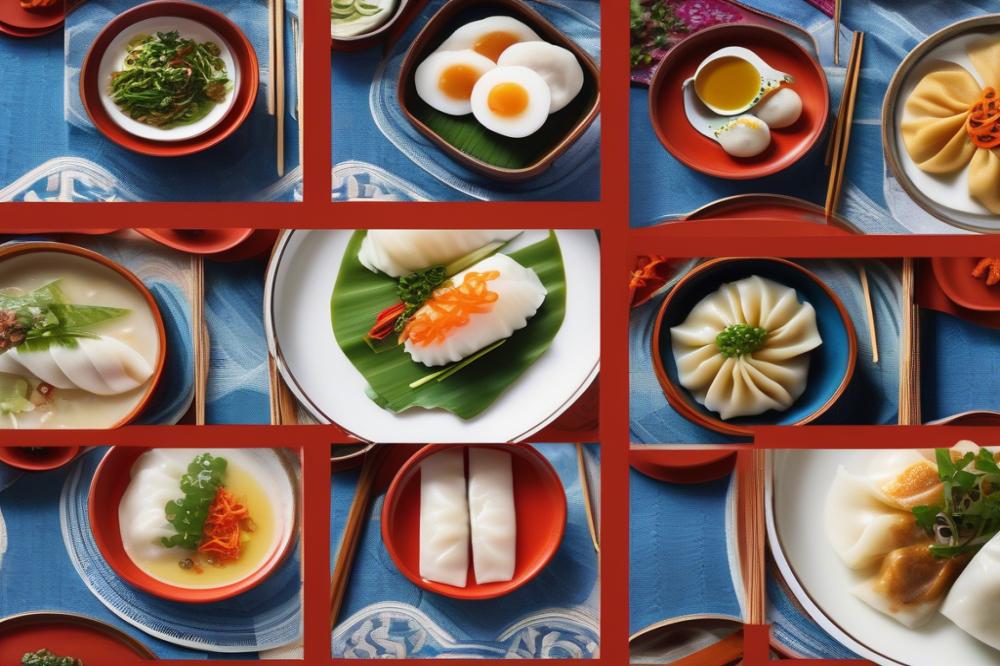
Common Mistakes to Avoid
Using the wrong wrapper can lead to disappointing results. If it’s too thick, your dumplings may turn out chewy instead of tender. Overfilling your mandu is another common error. This can cause the wrappers to burst during cooking. Take care to seal the edges well. Not sealing them properly can lead to leaks. When frying, avoid overcrowding the pan. This prevents the mandu from browning evenly. Remember, not all cooking methods suit every filling. Some ingredients need gentle steaming, while others benefit from a crispy fry.
Techniques for Achieving the Best Texture
Start with fresh ingredients. Freshness can make a significant difference in taste and texture. Consider the moisture in your filling. If it’s too wet, the wrapper may become soggy. Adding a pinch of salt can help draw out moisture without making it runny. Keep wrappers covered while you work to prevent them from drying out. When folding, experiment with pleats and shapes to find what works for you. Testing a small batch before cooking a large one can help you adjust flavors and textures. Lastly, steam your mandu for a soft bite. Frying can provide a delightful crunch, but balance is key.
How to Properly Store and Freeze Mandu
Before freezing, ensure they are fully cooled. Line a baking tray with parchment paper and place the mandu in a single layer. This method avoids sticking. After they freeze solid, transfer them to a proper storage bag. Remove as much air as possible from the bag. This prevents freezer burn and keeps flavors intact. For storing in the refrigerator, keep them in an airtight container. Use them within a few days for the best taste. When ready to cook, don’t thaw if you use them from the freezer. Cook straight from frozen, adding a few extra minutes to your timing. Enjoy the variations in texture and flavor that come from different cooking techniques.
Serving Suggestions and Variations
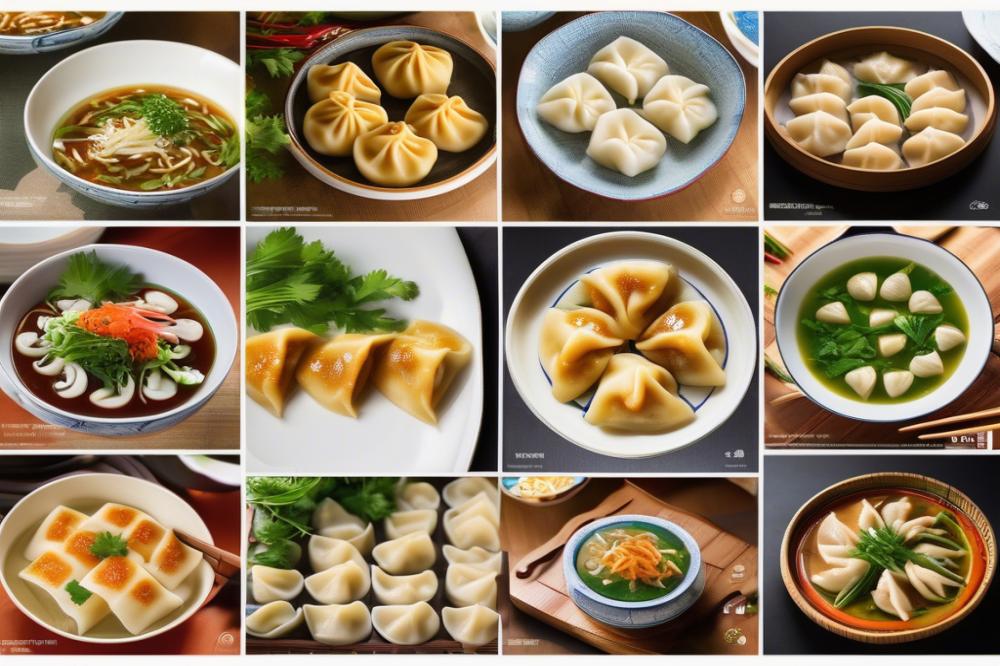
Classic Serving Methods
Korean dumplings are often enjoyed in various ways. A traditional method includes steaming, which keeps them moist and tender. Frying gives a crispy texture, adding a delightful crunch. Some people even boil them, a less common method that yields a softer dumpling. Serve them hot, right off the stove, for the best experience.
Dipping Sauces and Sides
Dipping sauces elevate the flavor. A common sauce is soy sauce mixed with vinegar and sesame oil. Adding chopped green onions enhances the taste. For a spicier twist, consider a sauce made from gochujang, the famous Korean chili paste. Side dishes like kimchi or pickled radish pair nicely, providing a contrast to the dumpling’s texture.
Creative Variations of the Filling
The filling inside each dumpling can become a canvas for creativity. Traditional options often include ground pork, beef, or chicken mixed with vegetables. However, for an exciting twist, try using shrimp or tofu. Adding ingredients like mushrooms or squash can create a different flavor profile. Mixing herbs like cilantro or perilla leaves can also give a refreshing taste to any recipe.
Vegetarian and Vegan Options
Making vegetarian dumplings is quite simple. Instead of meat, use a mixture of vegetables such as carrots, spinach, and cabbage. Tofu or tempeh can serve as protein sources. Seasonings like garlic and ginger will add depth to the filling. For those who follow a vegan lifestyle, using plant-based wrappers ensures that everyone can enjoy this dish. Creative combinations of nuts and seeds can also add texture and flavor.
The Joy of Making Korean Dumplings
Biting into a freshly made dumpling brings a sense of comfort and fulfillment. Korean mandu holds a special place in many hearts due to their rich flavors and comforting textures. The combination of crunchy vegetables, tender meat, and savory seasonings creates a delightful taste. These dumplings are not just food; they are a part of celebrations, family gatherings, and moments of togetherness.
Exploring this recipe invites you to dive into a world of flavors. Each step offers a chance to make it your own. Feel free to play with different fillings or dipping sauces. Perhaps try putting in extra garlic or fresh herbs for a unique twist. Sharing your creations with family and friends can be incredibly rewarding. Who knows, they might even inspire you to develop new variations.
The experience of making these traditional dumplings at home is truly special. Crafting them with your hands brings a sense of achievement. They can be made to suit various tastes and dietary preferences. Each bite of your homemade mandu represents the love and effort poured into the process. Enjoy the creativity and the connection to this cherished aspect of Korean cuisine.
As you gather ingredients and assemble each dumpling, remember that cooking is more than just following a recipe; it’s about joy, exploration, and connection. Homemade dumplings create lasting memories, whether it’s a cozy family dinner or a fun cooking party with friends. In the end, making dumplings is a delightful journey worth every minute spent in the kitchen.

